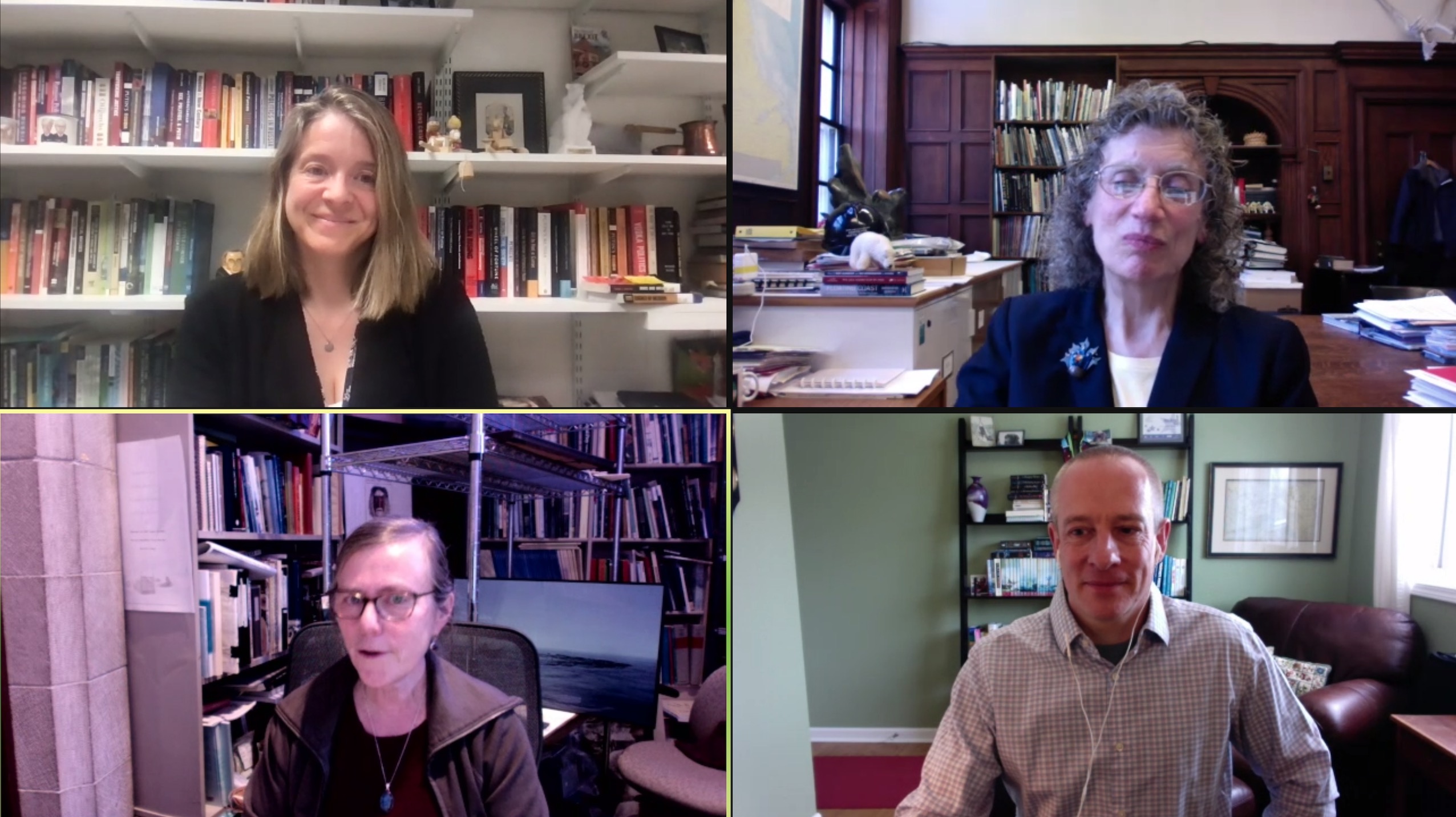Alumni Association and Arctic Museum hold collaborative panel on solutions for Arctic’s challenges
April 16, 2021

On Thursday evening, the Peary-MacMillan Arctic Museum welcomed Andrew Hartsig ’95, director of the Arctic Program at Ocean Conservatory; Susan Kaplan, professor of anthropology and director of the Peary-MacMillan Arctic Museum and Arctic Studies Center and Laura Henry, professor of government, to discuss the most prominent difficulties and environmental challenges in the Arctic region today. Moderated by Museum Curator and Registrar Genevieve LeMoine, the panelists discussed pollution, global warming, industrialization and inter-state relations in the Arctic.
Each panelist specializes in a different region of the Arctic—Hartsig lives and works in Alaska, Kaplan specializes in the Canadian Arctic region and Henry focuses on Russia. Spanning eight countries, the Arctic allows for diversity of specialties and regional cultures.
“The Arctic is home to a rich array of indigenous cultures,” Hartsig said during the lecture. “In Alaska alone, there are nearly 230 federally recognized tribes.”
Many villages and towns in the Arctic are remote, and the distance between these remote places and more populated areas result in a cross-pollination of local indigenous cultures and traditions, such as hunting and fishing.
“Elders traditionally have communicated information on safe passages along these frozen waterways to younger hunters,” Kaplan said during the lecture. “They’ve also pointed out areas of perennially open water, which are usually good hunting spots.”
Among many environmental crises in the Arctic is global warming, which Kaplan believes is the most threatening.
“With the warming temperatures, changes and current activities, elders no longer understand the local ice condition,” Kaplan said “As a result, people and equipment have been falling through the ice and people have been losing their lives.”
“NASA scientists have concluded that [the region is] warming about three times the rate of the rest of the planet,” added Hartsig. “So the prospect of an ice free Arctic in the summertime is no longer a distant possibility—it’s something that we’re likely to see as soon as the next couple of decades.”
The effects of the oil and natural gas extraction industry have also been consequential in the arctic region.
“There’s still a lot of drilling activity onshore in Alaska that’s still active and expanding into new areas, and the push to drill in new and fragile places like the Arctic National Wildlife Refuge is hugely controversial,” Hartsig said. “That’s especially true when you consider that oil and gas revenues provide a really important source of money for the state of Alaska and for indigenous communities on the North Slope.”
In the Russian Arctic, indigenous peoples have to balance industrialization of their land with their tradition of reindeer hunting.
“As you can imagine, the coexistence of the oil and gas industry and reindeer hunting is incredibly challenging,” said Henry during the lecture. “It’s challenging in part because the tundra is a relatively delicate ecosystem and there’s also air pollution, water pollution and waste issues.”
The indigenous peoples of the Arctic have found creative solutions to combat these issues—in the Labrador region of Canada, for example, a group of young indigenous people has created a monitoring system that surveys the ice to determine if it is safe for hunters to travel on.
“Here, you have an example of local people taking ownership over a monitoring system as they integrate oral history, traditional knowledge and modern instrumentation into their lives as they respond to climate change,” said Kaplan.
Alternatively, the indigenous peoples in the Russian Arctic have taken a different approach: benefit sharing. With benefit sharing, oil and gas companies give some of the revenue of their product back to the indigenous groups in exchange for using their land. Typically, these benefits come in the form of infrastructure for the village or town.
“And so instead of the conversation about rights, we really have a conversation about benefits,” said Henry.
Hartsig believes that finding solutions for these challenges must prioritize the needs and center the voices of indigenous people.
“The places where we work are actually their homes, and they’re going to be there long after Ocean Conservancy and groups like mine have gone,” said Hartsig. “Creating durable conservation solutions requires that indigenous people are part of—or ideally leading—that work.”

Comments
Before submitting a comment, please review our comment policy. Some key points from the policy: